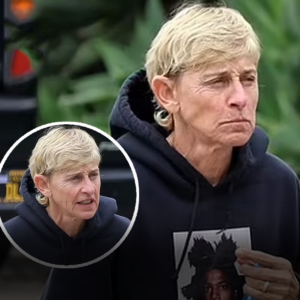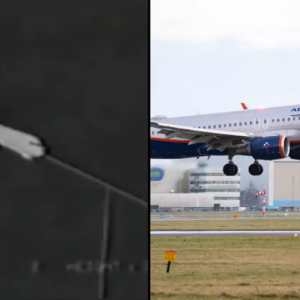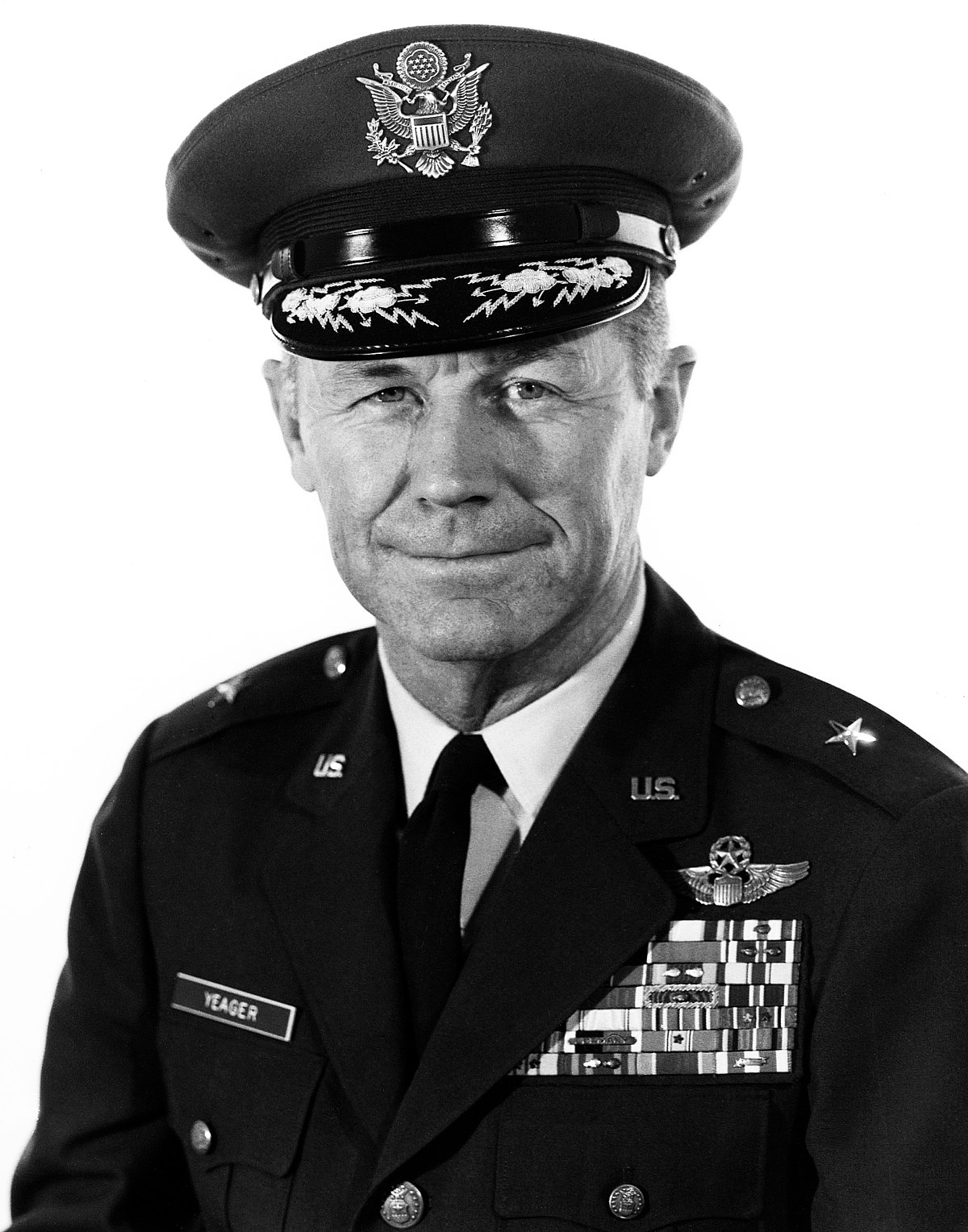
Brigadier General Charles E. Yeager, United States Air Force
Brigadier General Charles Elwood Yeager, United States Air Force, was born at Myra, Lincoln County, West Virginia, 13 February 1923. He was the second of five children of Albert Halley Yeager, a gas field driller, and Susan Florence Sizemore Yeager. He attended Hamlin High School, at Hamlin, West Virginia, graduating in 1940.
Chuck Yeager enlisted as a private, Air Corps, United States Army, 12 September 1941, at Fort Thomas, Newport, Kentucky. He was 5 feet, 8 inches tall (1.73 meters) and weighed 133 pounds (60 kilograms), with brown hair and blue eyes. He was assigned service number 15067845. Initially an aircraft mechanic, he soon applied for flight training. Private Yeager was accepted into the “flying sergeant” program.

Corporal Yeager in primary flight training. (U.S. Air Force)
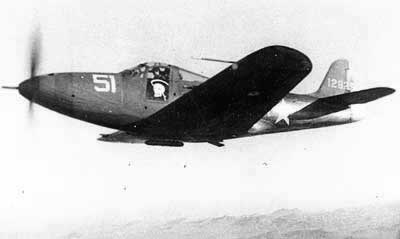
Yeager’s P-39 over the gunnery range, Tonapah, Nevada, April 1943. (chuckyeager.com)
Sergeant Yeager completed flight training at Yuma, Arizona, and on 10 March 1943, he was given a warrant as a Flight Officer, Air Corps, Army of the United States.
Assigned to the 363rd Fighter Squadron at Tonopah, Nevada, Flight Officer Yeager completed advanced training as a fighter pilot in the Bell P-39 Airacobra.
On 23 October 1943, while practicing tactics against a formation of Consolidated B-24 Liberator bombers, the engine of Yeager’s P-39 exploded. He wrote,
I was indicating about 400 mph when there was a roaring explosion in the back. Fire came out from under my seat and the airplane flew apart in different directions. I jettisoned the door and stuck my head out, and the prop wash seemed to stretch my neck three feet. I jumped for it. When the chute opened, I was knocked unconscious. . . I was moaning and groaning in a damned hospital bed. My back was fractured and it hurt like hell.
—Yeager: An Autobiography, Charles E. Yeager and Leo Janos, Bantam Books, Inc., New York, 1985, Chapter 3 at Page 21
When the 363rd deployed to England in November 1943, he transitioned to the North American Aviation P-51B Mustang. He named his P-51B-5-NA, 43-6762, Glamourus Glen, after his girlfriend. The airplane carried the squadron identification markings B6 Y on its fuselage. On 4 March 1945, he shot down an enemy Messerschmitt Bf-109G.
On his eighth combat mission, the following day, Yeager was himself shot down east of Bourdeaux, France, by Focke-Wulf Fw 190A 4 flown by Unteroffizier Irmfried Klotz.
. . . The world exploded and I ducked to protect my face with my hands, and when I looked a second later, my engine was on fire, and there was a gaping hole in my wingtip. The airplane began to spin. It happened so fast, there was no time to panic. I knew I was going down; I was barely able to unfasten my safety belt and crawl over the seat before my burning P-51 began to snap and roll, heading for the ground. I just fell out of the cockpit when the plane turned upside down—my canopy was shot away.
—Yeager: an Autobiography, by Charles E. Yeager and Leo Janos, Bantam Books, New York, 1985, Chapter 4 at Page 26.

Flight Officer Charles E. Yeager, Air Corps, Army of the United States, with his North American Aviation P-51B -5-NA Mustang, 43-6763, “Glamourus Glen.” (littlefriends.co.uk)
Yeager was slightly wounded. His Mustang was destroyed. Over the next few months he evaded enemy soldiers and escaped through France and Spain, returning to England in May 1944. He returned to combat with a new P-51D-5-NA Mustang, 44-13897, which he named Glamorous Glenn II.¹ He later flew Glamorous Glen III, P-51D-15-NA Mustang, 44-14888.²

First Lieutenant Charles Elwood (“Chuck”) Yeager, Air Corps, Army of the United States, standing on the wing of his North American Aviation P-51D-5-NA Mustang, 44-13897, “Glamorous Glenn II,” at Air Station 373, 12 October 1944. (Roger Freeman Collection, American Air Museum in Britain, FRE 000483)
Flight Officer Yeager was commissioned as a 2nd lieutenant, Air Corps, Army of the United States, 6 July 1944. A few months later, 24 October 1944, he was promoted to the rank of captain, A.U.S. Between 4 March and 27 November 1944, Captain Yeager was officially credited with 11.5 enemy aircraft destroyed during 67 combat missions.
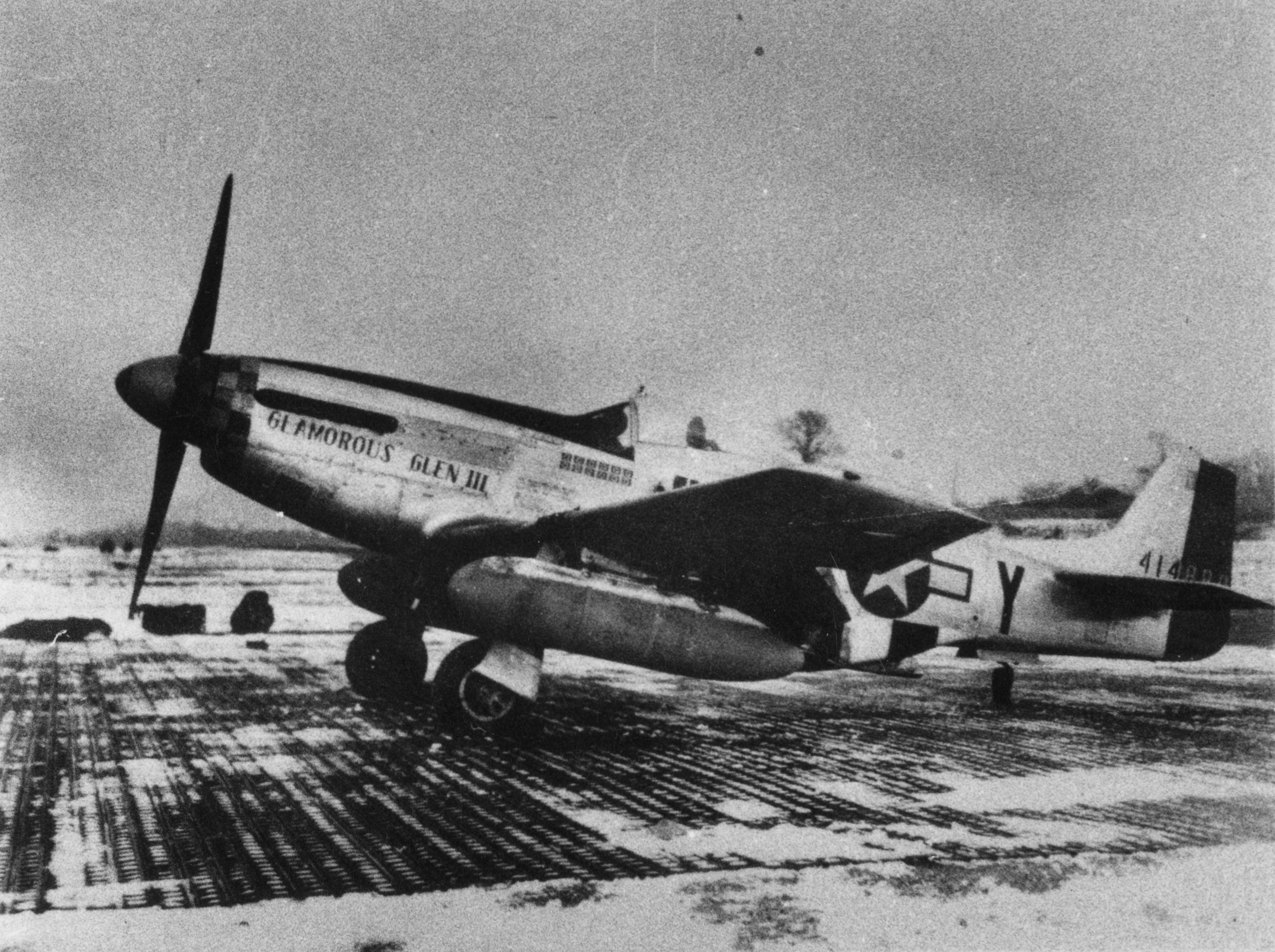
Chuck Yeager’s Mustang, Glamorous Glen III: North American Aviation P-51D-15-NA, serial number 44-14888, identification markings B6 Y, at USAAF Station 373 (RAF Leiston), Winter 1945. (U.S. Air Force)
During World War II, Captain Yeager had been awarded the Silver Star with one oak leaf cluster (two awards); Distinguished Flying Cross; Bronze Star Medal with “V” (for valor); Air Medal with 6 oak leaf clusters (7 awards); and the Purple Heart.
With the end of the War in Europe approaching, Yeager was rotated back to the United States.
Captain Yeager married Miss Glennis Faye Dickhouse of Oroville, California, 26 February 1945, at at the Yeager family home in Hamlin, West Virginia. The double-ring ceremony was presided over by Rev. Mr. W. A. DeBar of the Trinity Methodist Church. “The pretty brunette was attired in a light aqua crepe dress of street length. Her accessories were black and her corsage was fashioned of yellow rosebuds.”
— Oroville Mercury-Register, Vol. 72, No. 56, Wednesday, 7 March 1945, Page 2, Column 3
Captain and Mrs. Charles E. Yeager
On 10 February 1947, Captain Yeager received a commission as a second lieutenant, Air Corps, United States Army, with date of rank retroactive to 6 July 1944 (the date of his A.U.S. commission). He was promoted to first lieutenant on 6 July 1947. (These were permanent Regular Army ranks. Yeager continued to serve in the temporary rank of captain.) When the United States Air Force was established as a separate military service, 18 September 1947, Yeager became an Air Force officer.
Captain Yeager was assigned to the six-month test pilot school at Wright Field, Dayton, Ohio. He took part in several test projects, including the Lockheed P-80 Shooting Star and Republic P-84 Thunderjet. He also evaluated the German and Japanese fighter aircraft brought back to the United States after the war. Captain Yeager was then selected by Colonel Albert Boyd to fly the experimental Bell XS-1 rocket plane at Muroc Field in the high desert of southern California.
After a series of gliding and powered flights, on 14 October 1947, Captain Yeager and the XS-1 were dropped from a modified B-29 Superfortress at an altitude of 20,000 feet (6,048 meters). (Yeager had named his new rocket plane Glamorous Glennis.) Starting the 4-chambered Reaction Motors rocket engine, Yeager accelerated to Mach 1.06 at 42,000 feet. He had “broken” the Sound Barrier.
Yeager made more than 40 flights in the X-1 over the next two years, exceeding 1,000 miles per hour (1,610 kilometers per hour) and 70,000 feet (21,336 meters). He was awarded the Mackay and Collier Trophies in 1948. In 1949, the Fédération Aéronautique Internationale awarded its Gold Medal to Captain Yeager. General Yeager’s gold medal is in the collection of the Smithsonian Institution National Air and Space Museum, along with the Bell X-1 rocket plane, Glamorous Glennis.
The X-1 was followed by the Bell X-1A. On 12 December 1953, Major Yeager flew the new rocket plane to 1,650 miles per hour (2,655 kilometers per hour), Mach 2.44, at 74,700 feet (22,769 meters).
After the rocket engine was shut down, the X-1A tumbled out of control—”divergent in three axes” in test pilot speak—and fell out of the sky. It dropped nearly 50,000 feet (15,240 meters) in 70 seconds. Yeager was exposed to accelerations of +8 to -1.5 g’s. The motion was so violent that Yeager cracked the rocket plane’s canopy with his flight helmet.
Yeager was finally able to recover by 30,000 feet (9,144 meters) and landed safely at Edwards Air Force Base.
Yeager later remarked that if the X-1A had an ejection seat he would have used it.
Bell Aircraft Corporation engineers had warned Yeager not to exceed Mach 2.3.
During the Korean War, Major Yeager test flew a captured North Korean Mikoyan-Gurevich MiG-15 fighter. Its pilot, Lieutenant No Kum-Sok, had flown it to Kimpo Air Base, Republic of South Korea, on 21 September 1953.
A Mikoyan-Gurevich MiG-15bis in a hangar at Kimpo Air Base, South Korea.It was examined and test flown by Air Force test pilot Major Charles E. Yeager. (U.S. Air Force).
On 17 November 1954, in a ceremony at The White House, President Dwight D. Eisenhower presented the Harmon International Trophy to Major Yeager, for his Mach 2.44 flight. His friend, Jackie Cochran, was awarded the Harmon Aviatrix Trophy at the same time.

Jackie Cochran and Chuck Yeager being presented with the Harmon International Trophies by President Dwight D. Eisenhower at The White House, 17 November 1954. (Air Force Flight Test Center History Office 040130-F-0000G-011)
In 1954, Major Yeager was assigned to command the 417th Fighter Bomber Squadron at Hahn Air Base, Germany. The 417th flew the North American Aviation F-86H Sabre.

The 1956 U.S. Air Forces in Europe (50th Fighter-Bomber Wing) representatives to the Air Force Fighter Weapons Meet at Nellis Air Force Base, Nev., included (left to right) Capt. Coleman Baker, Lt. Col. Charles “Chuck” Yeager, Col. Fred Ascani, Maj. James Gasser and Capt. Robert Pasqualicchio. (U.S. Air Force 061208-F-0000C-002)
In 1958, Lieutenant Colonel Yeager assumed command of the 1st Fighter Day Squadron at George Air Force Base, Victorville, California, which was equipped with the North American Aviation F-100 Super Sabre.
Yeager attended the Air War College at Maxwell AFB, Montgomery, Alabama, graduating in June 1961.
On 23 July 1962, Colonel Yeager returned to Edwards Air Force Base to become commandant of the Aerospace Research Pilot School.

Colonel Yeager became Commandant of the U.S. Air Force Aerospace Research Pilot School at Edwards Air Force Base, 23 July 1962. (U.S. Air Force)
The Aerospace Research Pilots School trained all of the U.S. military’s astronaut candidates. One of the training aircraft was the Aerospace Trainer (AST), a highly-modifies Lockheed NF-104A Starfighter. The AST was equipped with a rocket engine and a reaction control system to provide pitch, roll and yaw control when at very high altitudes where the normal aircraft flight controls could not function.
On 10 December 1963, Colonel Yeager was flying an AST, 56-762, on a zoom climb profile, aimingg for an altitude record at approximately 120,000 feet ( meters). He reached only 108,000 feet (32,918 meters) however. On reentry, the AST’s pitch angle was incorrect and its engine would not restart. The airplane went into a spin.
Yeager rode the out-of-control airplane down 80,000 feet (24,384 meters) before ejecting.
The data recorder would later indicate that the airplane made fourteen flat spins from 104,000 until impact on the desert floor. I stayed with it through thirteen of those spins before I punched out. I hated losing an expensive airplane, but I couldn’t think of anything else to do. . . I went ahead and punched out. . . .
— Yeager, An Autobiography, by Brigadier General Charles E. Yeager, U.S. Air Force (Retired) and Leo Janos, Bantam Books, New York, 1985, at Pages 279–281.
Colonel Yeager commanded the 405th Fighter Wing at Clark AFB, Philippine Islands, in July 1966. He flew 127 combat missions over Vietnam with the Martin B-57 Canberra light bomber.
Returning to the United States in February 1968, Colonel Yeager took command of the 4th Tactical Fighter Wing, Seymour Johnson AFB, North Carolina. The 4th deployed to the Republic of Korea during the Pueblo Crisis.
Colonel Yeager was promoted to the rank of brigadier general, 1 August 1969 (date of rank 22 June 1969). He was appointed vice commander, Seventeenth Air Force, at Ramstein Air Base, Germany.
Brigadier General Yeager served as a U.S. defense representative to Pakistan from 1971 to 1973. He was then assigned to the Air Force Inspection and Safety Center, Norton AFB, near Riverside, California. He took command of the center June 1973.
Brigadier General Yeager made his final flight as an active duty Air Force pilot in a McDonnell Douglas F-4E Phantom II at Edward Air Force Base, 28 February 1975. During his career, General Yeager flew 180 different aircraft types and accumulated 10,131.6 flight hours. He retired the following day, 1 March 1975, after 12,222 days of service.
Chuck Yeager’s popularity skyrocketed following the publication of Tom Wolfe’s book, The Right Stuff, in 1979, and the release of The Ladd Company’s movie which was based on it. (Yeager had a “cameo” appearance in the film.) He became a spokesperson for AC Delco and the Northrop Corporation’s F-20 Tigershark lightweight fighter prototype. In 1986 and 1988, he drove the pace car at the Indianapolis 500. Yeager co-wrote an autobiography, Yeager, with Leo Janos, published in 1985, and followed in 1988 with Press On!, co-authored by Charles Leerhsen.
In 1986, President Ronald Reagan appointed General Yeager to the Rogers Commission investigating the Challenger Disaster.
Glennis Yeager passed away 22 December 1990 at Travis Air Force Base, Sacramento, California.
TDiA was present at Edwards Air Force Base, 14 October 1997, on the 50th Anniversary of Yeager’s flight breaking the sound barrier. Flying in the forward cockpit of a McDonnell Douglas F-15D Eagle, with co-pilot Lieutenant Colonel Troy Fontaine and wingman Bob Hoover in a General Dynamics F-16 chase plane, Yeager again left a sonic boom in his path as he flew over the high desert.
On 22 August 2003, Chuck Yeager married Ms. Victoria Scott D’Angelo in a civil ceremony at Incline Village, Nevada.
Brigadier General Charles Elwood Yeager, United States Air Force (Retired) died at a hospital in Los Angeles, California, 7 December 2020, at the age of 97 years. His remains are buried at the Lincoln Memorial Cemetery, Myra, West Virginia.
“All I am. . . I owe to the United States Air Force.” Brigadier General Charles E. Yeager, United States Air Force (Retired), photographed at Edwards Air Force Base, California, 14 October 1997, the Fiftieth Anniversary of his historic supersonic flight. (Photograph used with permission. © 2010, Tim Bradley Imaging)
News
The “Red Zone” – Land Still Abandoned Due to the Dangers Left by the First World War
The “Red Zone” – Land Still Abandoned Due to the Dangers Left by the First World War In the aftermath of the First World War, large areas of northeast France were left in ruin. Years of constant siege warfare along…
Before Becoming a Big-Name Actor, Richard Todd was a Paratrooper Who Fought at Pegasus Bridge
Before Becoming a Big-Name Actor, Richard Todd was a Paratrooper Who Fought at Pegasus Bridge Photo Credit: 1. Sgt. Christie, No. 5 Army Film & Photographic Unit / Imperial War Museums / Wikimedia Commons / Public Domain 2. Silver Screen…
The Potsdam Giants: A Prussian Infantry Regiment Of Nothing But Very Tall Soldiers
The Potsdam Giants: A Prussian Infantry Regiment Of Nothing But Very Tall Soldiers Frederick William I inspecting his giant guards known as The Potsdam Giants, a Prussian infantry regiment No 6, composed of taller-than-average soldiers. Frederick William I of Prussia,…
Ellen DeGeneres cuts a very casual figure as she drives around in her Ferrari
Ellen DeGeneres cuts a very casual figure as she drives around Montecito in her Ferrari… while preparing to embark on her stand-up tour Ellen DeGeneres cut a very casual figure as she made her way around Montecito on Tuesday morning. The…
“I’m heavily tattooed and keep getting rejected for jobs – it’s not fair”
Heavily tattooed OnlyFans star, 23, with multiple piercings on her FACE slams TJ Maxx for rejecting her for a job – accusing retailer of unfairly judging her dramatic look A woman has accused TJ Maxx of rejecting her for a…
All 75 passengers killed in plane crash after pilot let his chirldren control the plane
Praying, turning the engine off by accident and letting KIDS play with the controls: The worst blunders made by pilots before a crash revealed Every time we board a plane, we put our lives in the hands of the pilot….
End of content
No more pages to load




